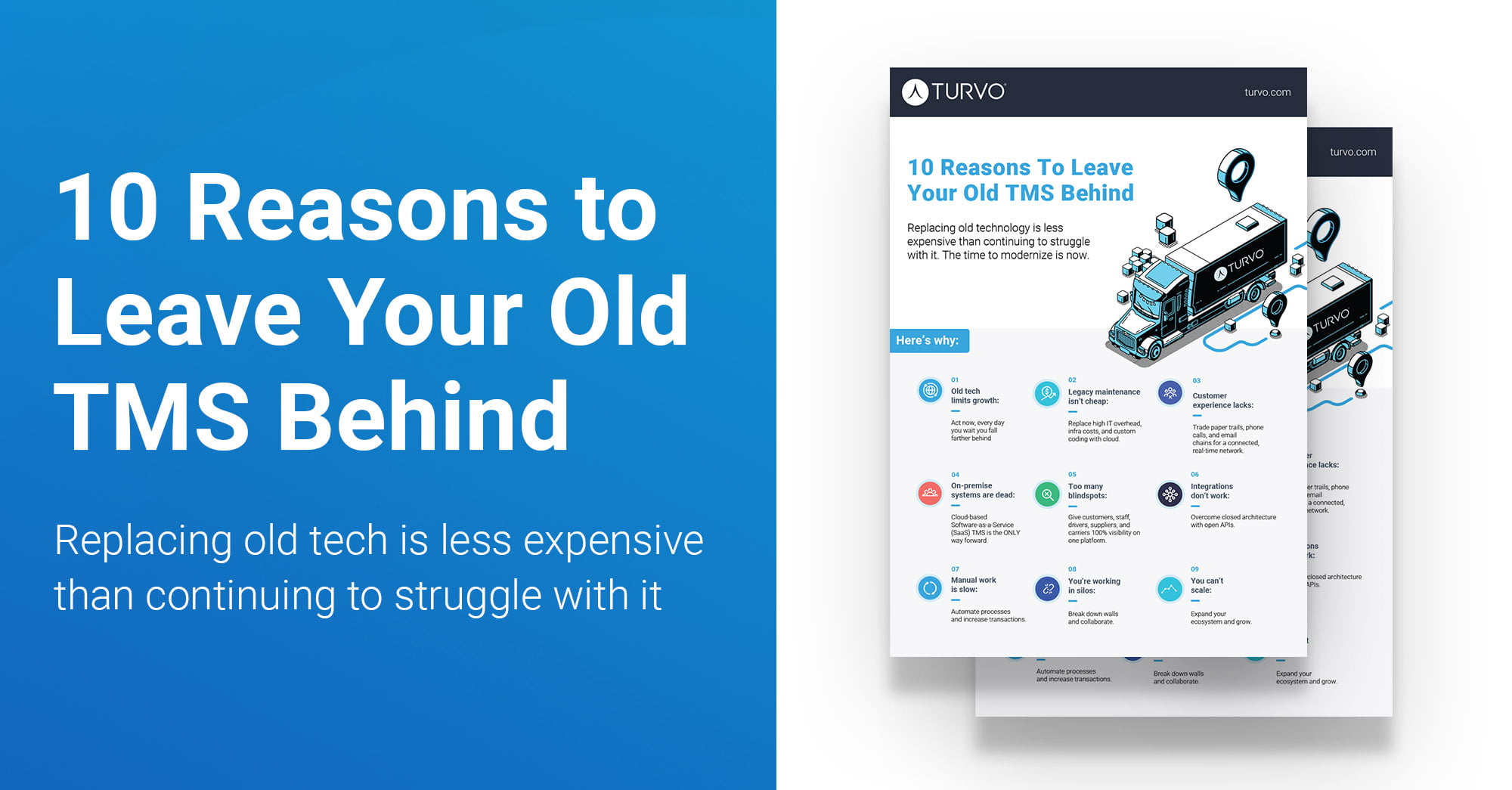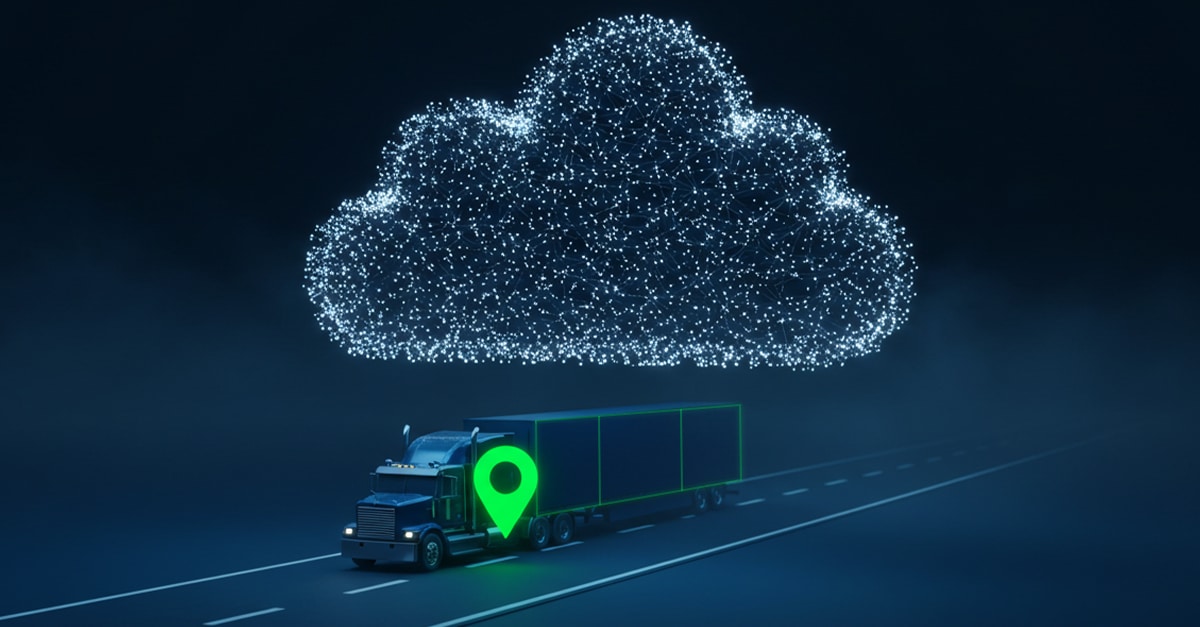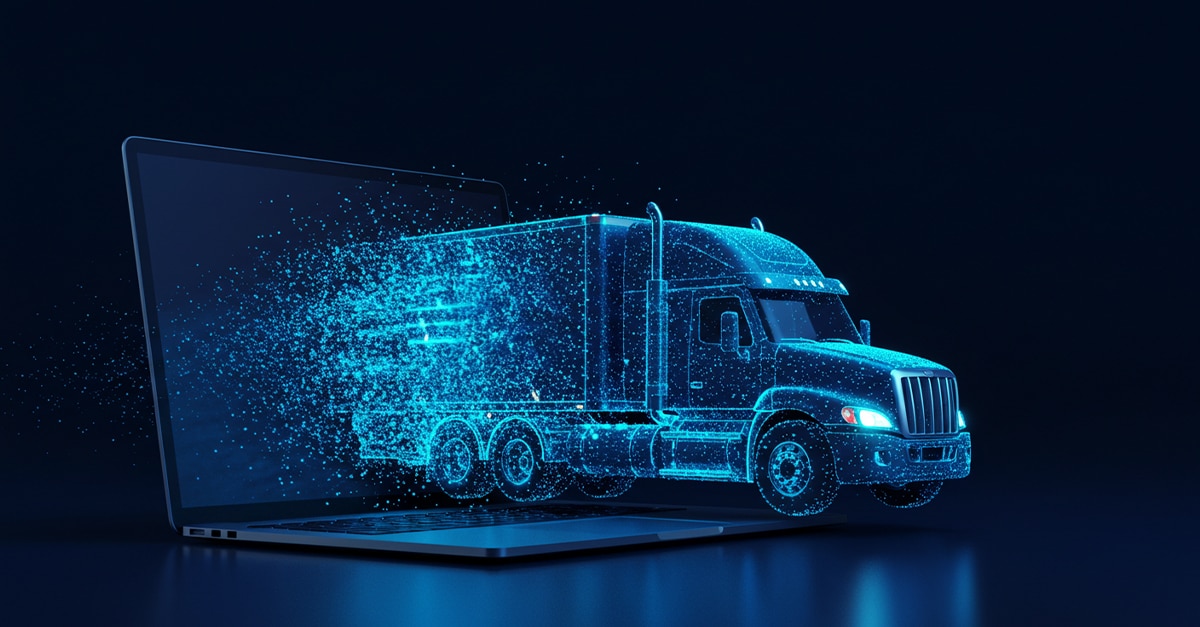It is less expensive to replace old technology than to continue to struggle with it. Most industries have already shifted to cloud systems to increase collaboration and visibility, and adapt to greater customer demands. Logistics providers who make the shift never turn back.
And why would they? Your ultimate business model should make your company future-proof, more flexible, and promote an additional 30-50% revenue growth. If your current TMS does not produce these results, it’s time to reevaluate your tech stack.
Here are 10 reasons to leave behind your old TMS.
1. Old tech limits growth
Ask yourself if your current TMS supports your 3PL or brokerage’s growth goals. Most TMS systems are not built with the flexibility you need when your business grows. You will fall behind quickly if you wait until you gain more business to scale your TMS. The time to prepare for growth is NOW.
2. Legacy maintenance isn’t cheap
It turns out, legacy systems increase maintenance budget by 15% every year. You may think that it takes more time and money to shift to a cloud-based system, but in reality, you pay way more for a system that your team and network cannot access from everywhere. The soaring fees of legacy systems hurt your business growth and it’s time to shift to flexible cloud software.
P.S. Learn how our client Vine Line Logistics went live in just 8 weeks.
3. Customer experience lacks
Is your customer service team constantly tied up with phone calls, emails, and frustrated clients on the other end of the line? A modern TMS that enables visibility at every step of the shipment process is the solution to improve the customer experience and save massive time for both your clients as well as your reps.
4. On-premise systems are dead
Systems that can only be accessed from a specific location are no good for the supply chain business, where various stakeholders need equal access to information about orders, inventory, shipments, drivers, etc. Visibility starts with accessibility.
5. Too many blind spots
Blind spots are the ultimate source of uncertainty, anxiety, and unproductive shipments. Supply chain networks are already fragile, and when one process goes wrong or worse, doesn’t take place at all, your entire network topples. Luckily, you can prevent this with smart visibility features within your TMS, such as real-time shipment tracking, automatic inventory updates, etc.
P.S. Find out how Turvo enables visibility for logistics service providers.
6. Integrations don’t work
If you can’t have simple point-and-click integrations that take seconds to connect all your other vital systems and software, it’s time to say goodbye to your current TMS. A robust, public, open API solves issues with connecting third-party systems. Imagine how great it would be to seamlessly integrate with your WMS, OMS, accounting system, load board, and any other platforms that are essential for your supply chain business.
7. Manual work is slow
Did you know that businesses lose 20-30% of potential revenue from inefficient, manual work? If there is an option to automate specific tasks, you should. Freight brokers and 3PLs gain numerous benefits from automation, such as accelerated shipments, faster payments, and the ability to take on more loads since a large chunk of time is freed up for your team thanks to a TMS that truly enables connectivity.
8. You’re working in silos
Supply chain silos kill smooth, fast, and productive shipments. If you are tired of endless phone calls and emails from customers inquiring about where their order is at a given point in time, you should introduce collaboration into your business strategy. Luckily, collaborative TMS takes care of this for you, and all you need to do is share a shipment link with stakeholders for everyone to view the shipment’s details in real-time.
9. You can’t scale
When your TMS doesn’t work with you to set higher goals and handle larger shipments, you will never be able to reach this status. Flexibility should be one of the key benefits of your TMS system. If your company is in the same place it was a year ago, then ask yourself if it’s your overall business strategy or if you are strapped by old, limited technology.
10. Hiring is tough
So many TMS systems are not user-friendly and cannot be learned within a few weeks. Even the most tech-savvy employees don’t want to click 50-100 times to create a simple shipment. If you struggle to hire and retain talent due to a complicated system that everyone has to use, it’s time to seek out a new system. Find software that encourages new talent to come in, not run away from your company.
Like this article? Download our pocket guide now to take these 10 tips with you and leave behind your old, stress-inducing TMS.










